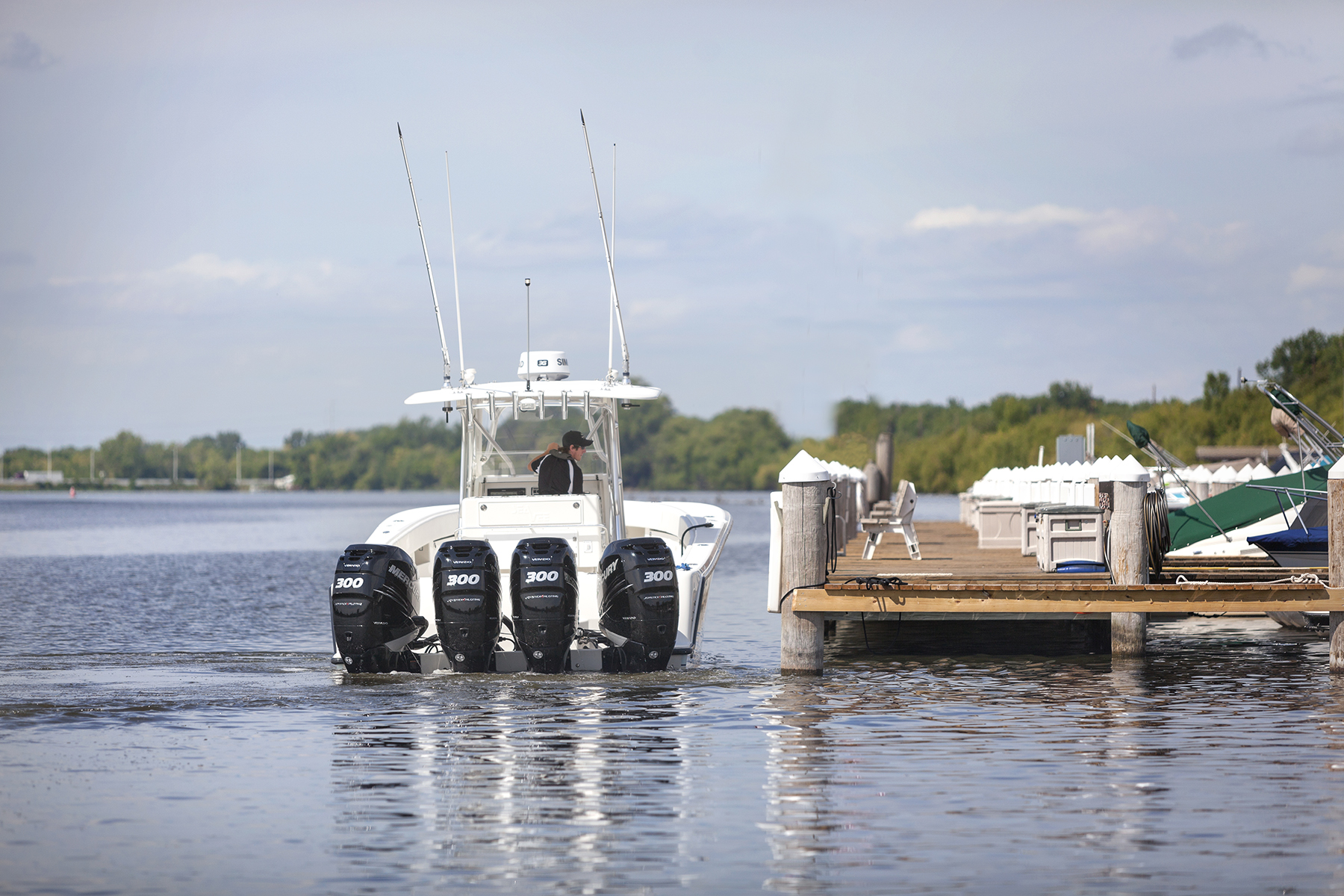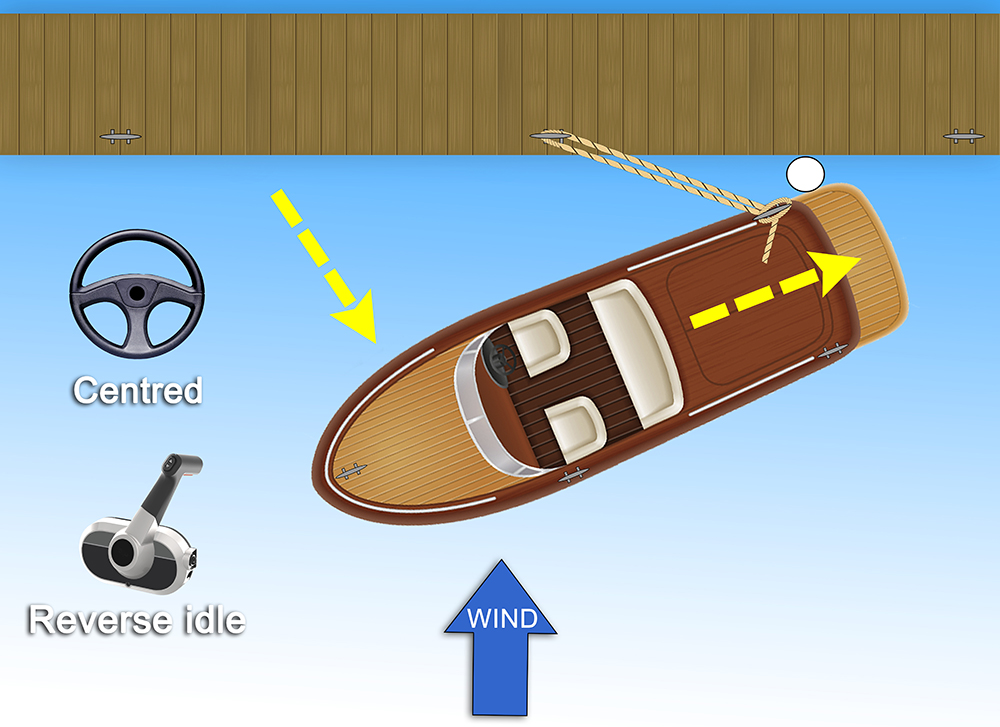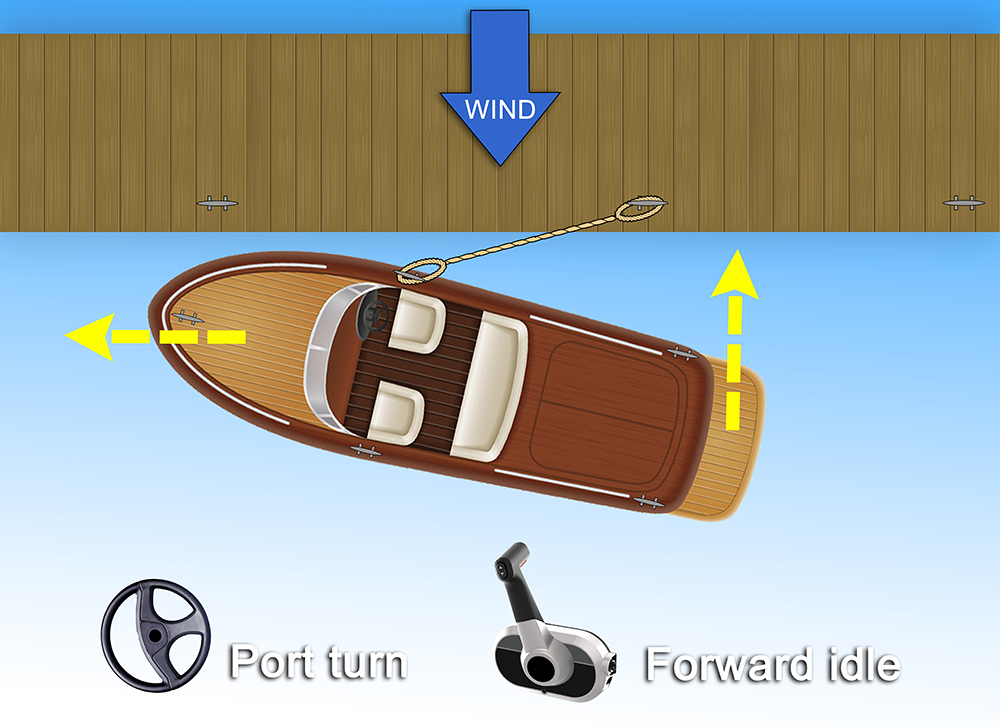Docking Assistance Devices
By Craig Hamilton
I have given many docking seminars and taught hundreds of boat-handling clinics over the years and the number one question that arises involves docking in breezy conditions. My answer? Spring lines.
This topic may seem rather antiquated to anyone with thrusters or joystick systems, but I want to emphasize here that every skipper should know how to use spring lines regardless of how your boat is equipped.
Here are two common situations in which a spring line can help:
Departing in strong wind
You are ready to depart but the wind is pinning you onto the dock. Reverse on a Stern Spring Line and swing the bow out into the wind.
Set up a stern line that leads forward approximately half the boat’s length to a cleat on the dock. Go around the cleat and back to your boat’s stern cleat but don’t belay, simply do a round turn and hold it from inside the cockpit.
Cast off the bow and shift into idle reverse. Wait until the boat swings out into the wind.
Shift to neutral and quickly release the line. Once the line is clear of the water, shift into forward gear and maneuver away. NOTE: If you boat has a swim platform, you may need an additional (roving) fender at the stern to protect the swim platform from making contact with the dock.

 Approaching the dock in a strong wind
Approaching the dock in a strong wind
The wind is blowing you off the dock as you are wanting to maneuver alongside.
On the midships cleat, set up an After-Bow Spring Line that has an eye splice tied onto the bitter end. The length of an After-Bow spring line should be a minimum of 1/3rd the length of the boat.
Approach at a steep 45-degree angle and turn to maneuver alongside and shift to neutral
Pass the spring line to a person on the dock and have them quickly drop the eye splice over the cleat while the line is slack
As the line takes up, shift back into forward gear and quickly turn the wheel away from the dock.
The boat will snug up parallel to the dock for as long as it remains in gear. Attach a stern line and shift to neutral.
Two things about After-Bow spring lines:
First, the location of your midships cleat affects the direction the bow will swing when the line takes up. Turn the wheel in the opposite direction of the bow’s swing as the line is about to load up.
Second, the amount of momentum carried when alongside directly affects the amount of time you will have to get the After-Bow Spring Line onto the dock cleat.
Using an After-Bow Spring Line takes planning and practice, as the line is placed on the cleat while the boat is in motion. Keep safety in mind, as it is important that the line and the cleats involved are sufficient to handle the stress load when springing on or off a dock. It may take a few moments to get the desired springing affect, so be patient.
Protect your crew! Make certain to have good communication with the line handler in order to avoid injuries. As always, seek the help of a professional instructor when you are not confident in your ability to learn new techniques on your own. Safety first!
Capt. Craig Hamilton is a
Master Instructor at BoaterSkills.ca.
You can reach him by email at craig@boaterskills.ca



 Approaching the
Approaching the